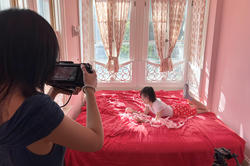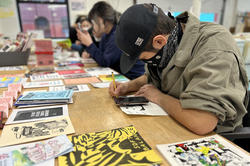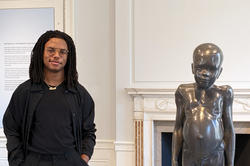Students in a fall course called Reorientations are challenging conventional approaches to theatrical set design and creating immersive cinematic experiences.
RISD’s Foundry Inspires Sculpture Course Focused on the Making Body
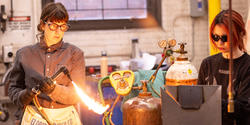
Students in The Making Body—a new Wintersession course designed by faculty member Lu Heintz 01 SC (top photo, left)—are using the Sculpture department’s Foundry (or metal shop) to explore the ways in which their physical bodies are shaped by the tools they use and the work they produce. To paraphrase feminist scholar Sara Ahmed, bodies are affected by contact with objects and may even take shape through such contact. “In a time when implements and devices serve as our everyday prosthetics, we’re contemplating how to delineate the space of the body,” Heintz explains.
Sculpture Department Head Heather Rowe points out that the course was inspired by the Foundry itself, which has been run since 1992 by Senior Academic Technologist Doug Borkman MFA 91 SC. “The Foundry is such an incredibly inspiring place for community and for ambitious projects, large and small,” she notes. “I also want to acknowledge a video project called RISD Museum Guild Workplace that alum Aryana Polat 21 SC made as a student as a point of reference. The video activated this industrial space in a performative, intimate and accessible way.”
Heintz introduced students to a wealth of tools, jigs and techniques, including cutting, bending, forging, riveting, grinding, welding, sandblasting and polishing. “But the class is not just about making objects, but also about using them in performance,” she explains. “We were interested in everyday habits, gestures and practices that occur in the domestic space or in sites of labor and production—places where bodies shape objects but are also shaped by them. The students created unique objects and possibilities, often disrupting normative repetitions.”
One of the many relevant reference pieces she shared with students is Semiotics of the Kitchen, a 1975 video by conceptual artist Martha Rosler in which a demonstration of kitchen utensils goes bonkers and every tool becomes a weapon, revealing the female demonstrator’s pent-up rage and also the way that societal norms shape our perception of tools.
“We were interested in everyday habits, gestures and practices that occur in the domestic space or in sites of labor and production.”
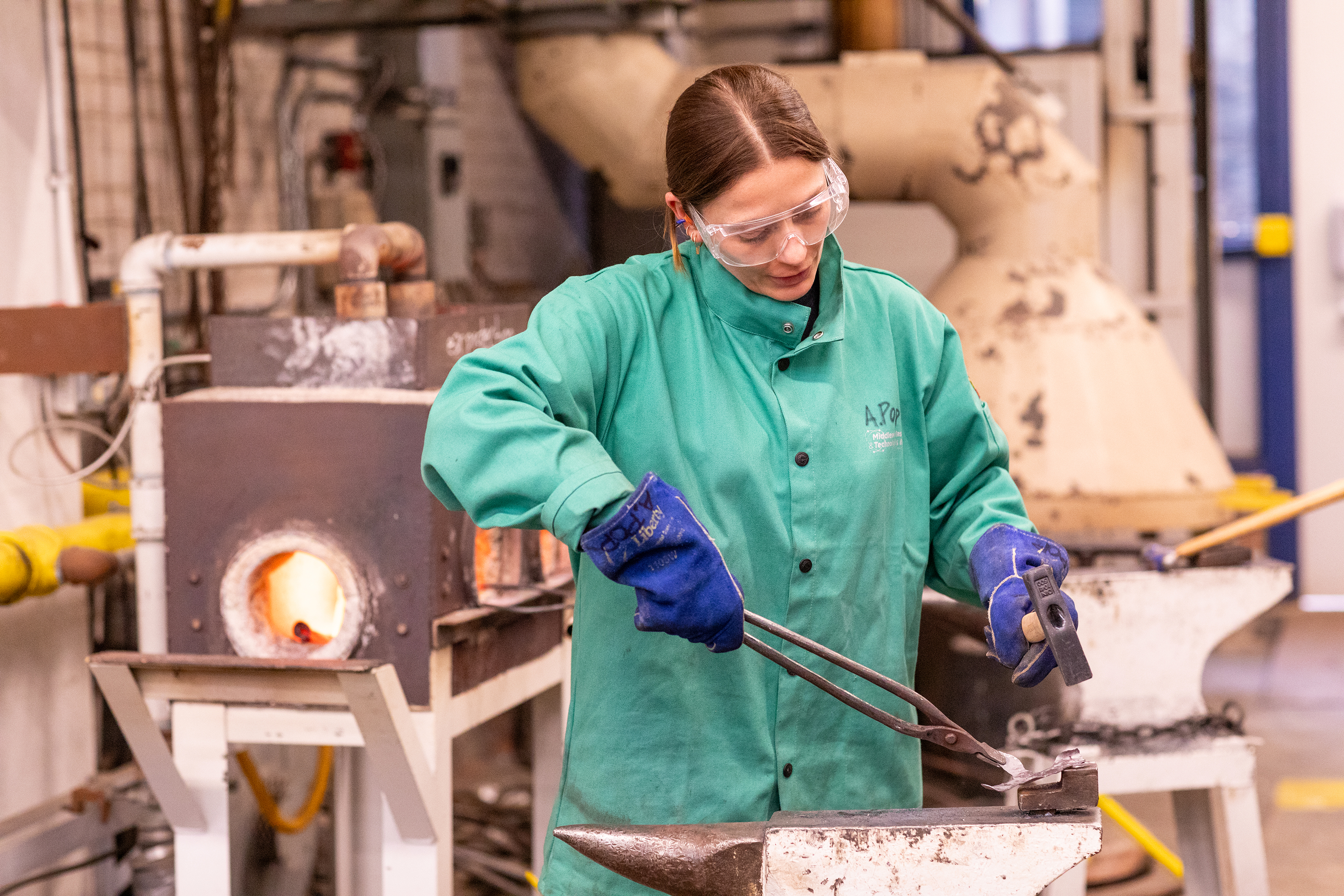
The students created their own simple tools at the beginning of the term and were encouraged by Heintz to “bring themselves and the act of making into the objects.” Junior Bec Patsenker 25 SC enacted an informal performance piece in which she inserted a boxy metal frame under her clothes to present a more masculine silhouette.
“I’ve been thinking about how it feels to be inside a queer, feminized body in this masculine space,” Patsenker explains. “I’m trying to make a tool that outwardly modifies my body and allows me to interact with the world in a way that I feel comfortable.”
Senior Sara Choi 24 ID passed around a simple scribe/chisel combo for woodworking that she fashioned on the grinder. One student noted that it “felt good in the hand.” The class was also wowed by a series of twisted metal tuning forks created by senior Emma Mullington 24 SC and a pair of brushes junior Viva Motwani 25 FD/ID constructed out of metal and tampico fiber.
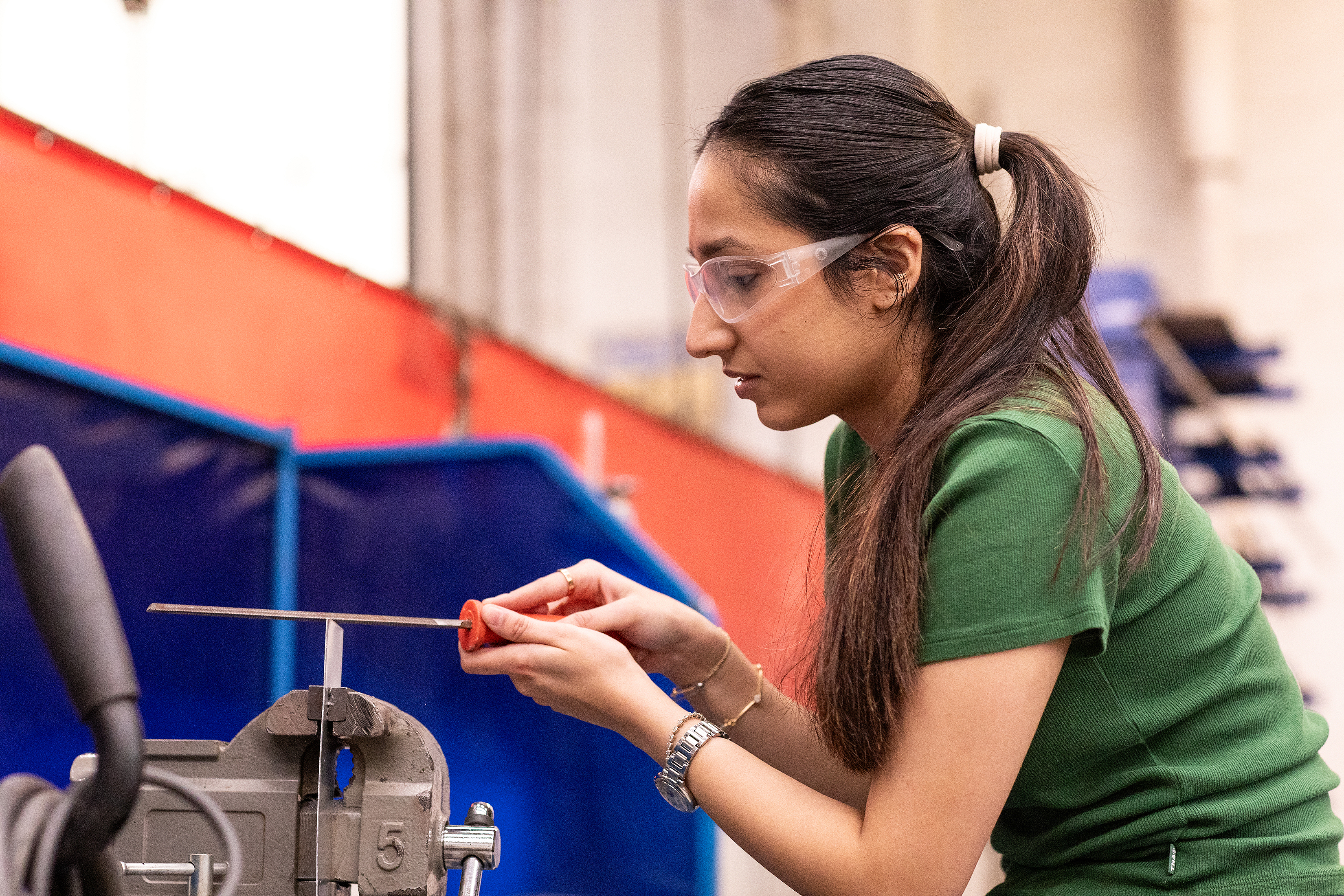
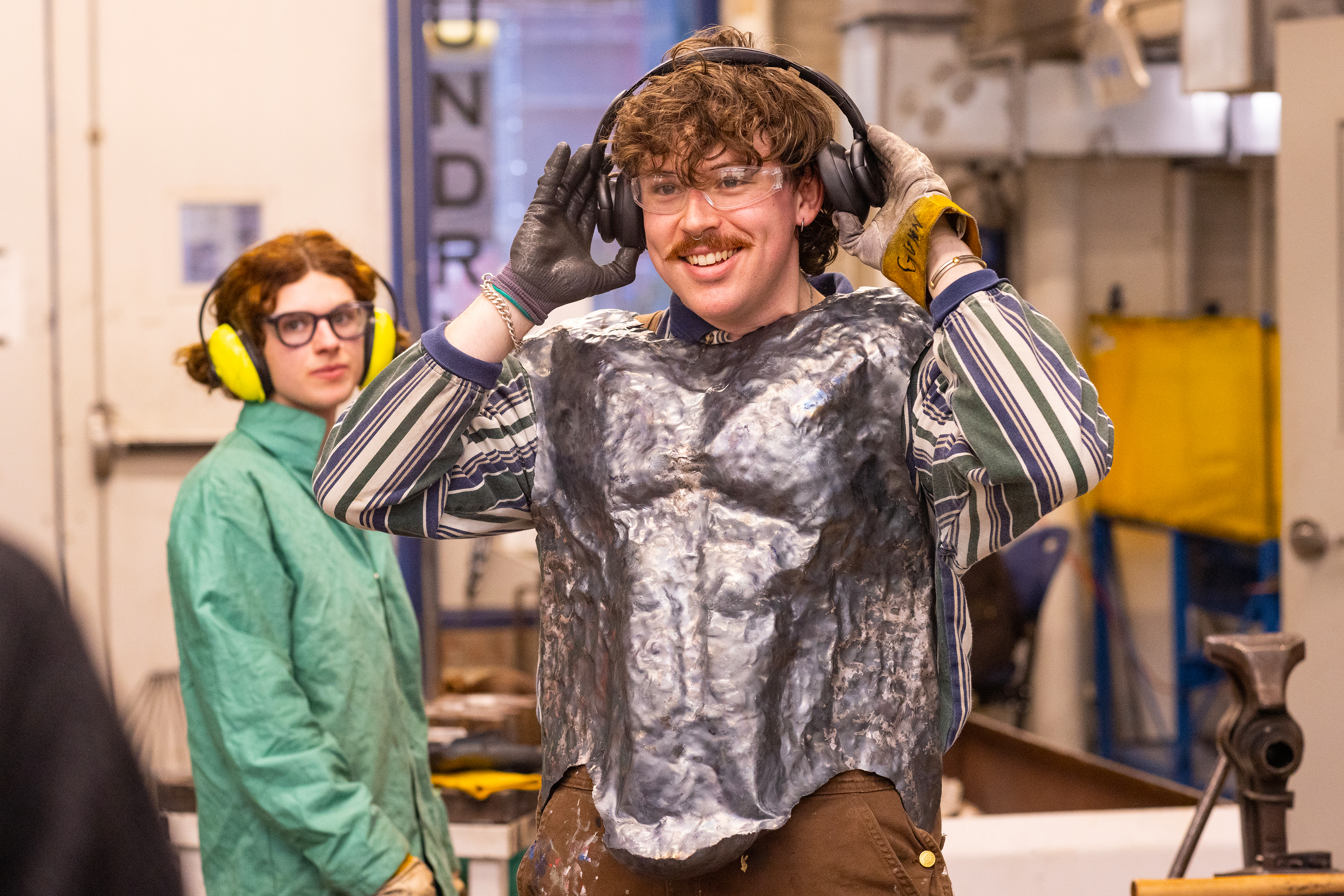
As the weeks flew by, students turned their attention to creating objects they’ll use in their final performances, researching the history of prosthetics and other devices designed to augment the human body. In the words of curator and historian Katherine Ott, a prosthesis “can serve as a prop or an accessory, a means to accomplish work, indicate gender, and so on.”
Senior Michael Gunn 24 PT is creating a prosthesis in the form of a brawny metal chest plate. He’ll wear the finished piece for his final performance, which will also involve drawing. “I’m going to be wearing heels and a corset as well,” he says with a smile, “so it’s not all about masculinity!”
Simone Solondz / photos by Jo Sittenfeld MFA 08 PH
February 20, 2024
